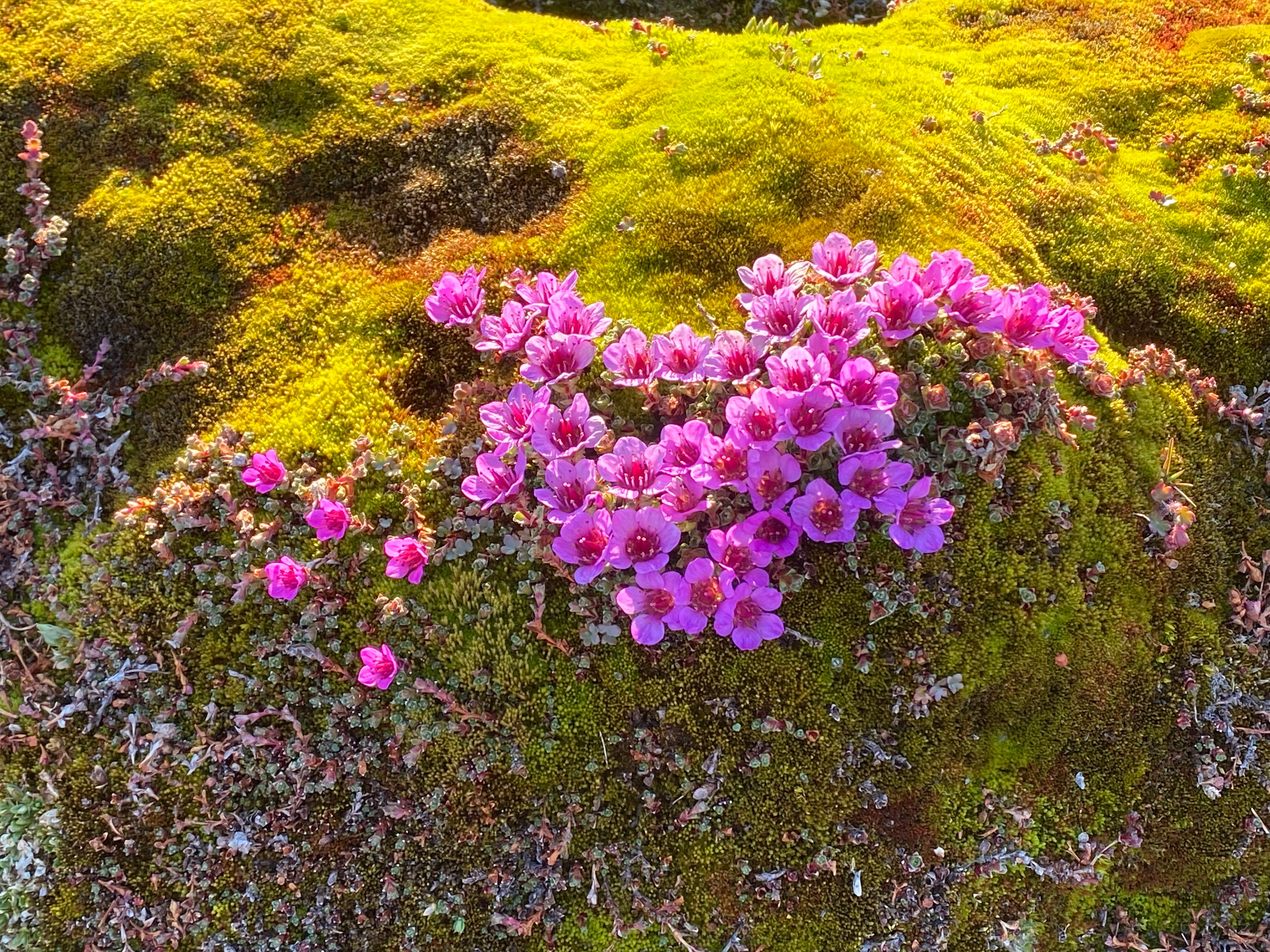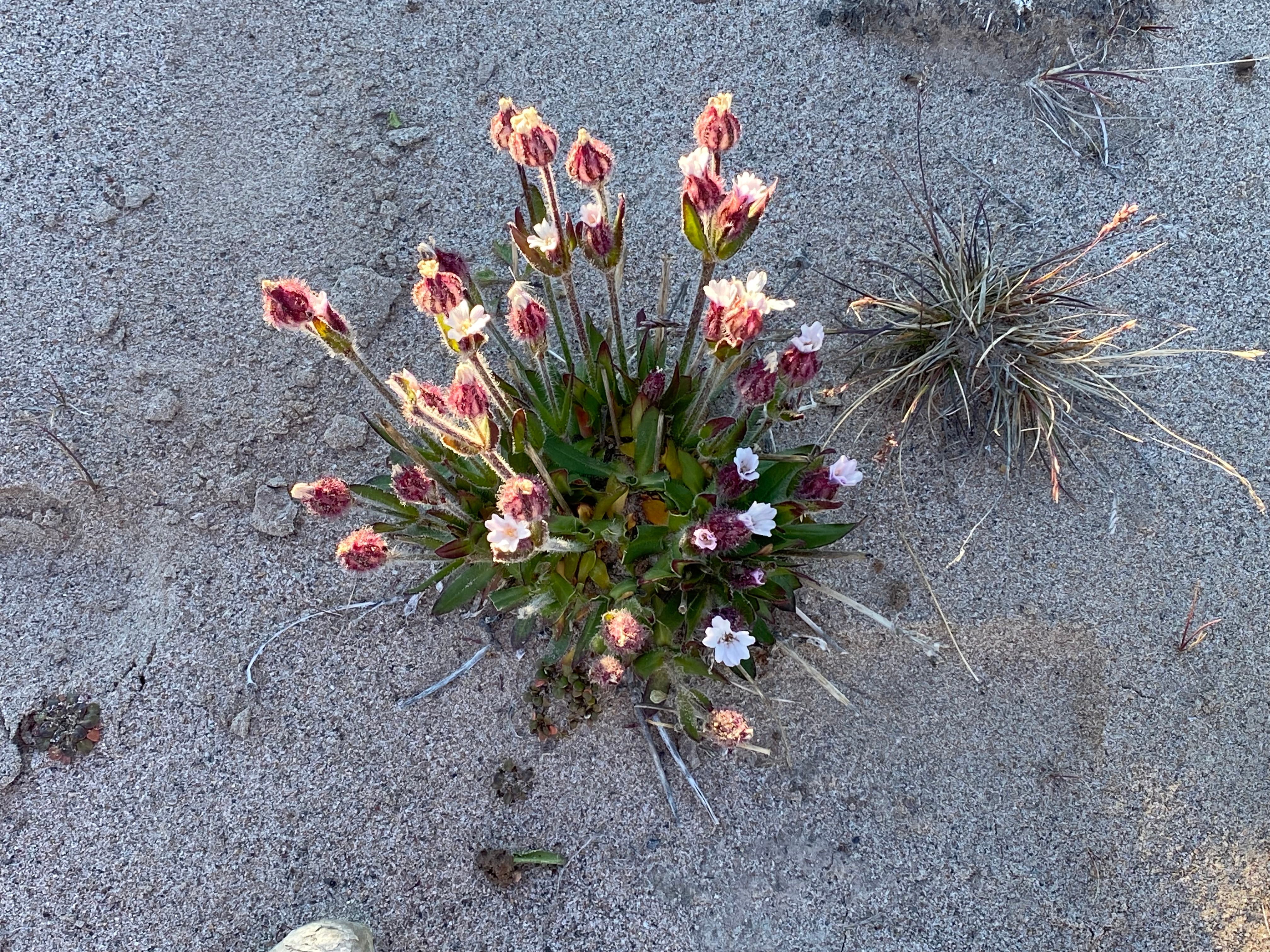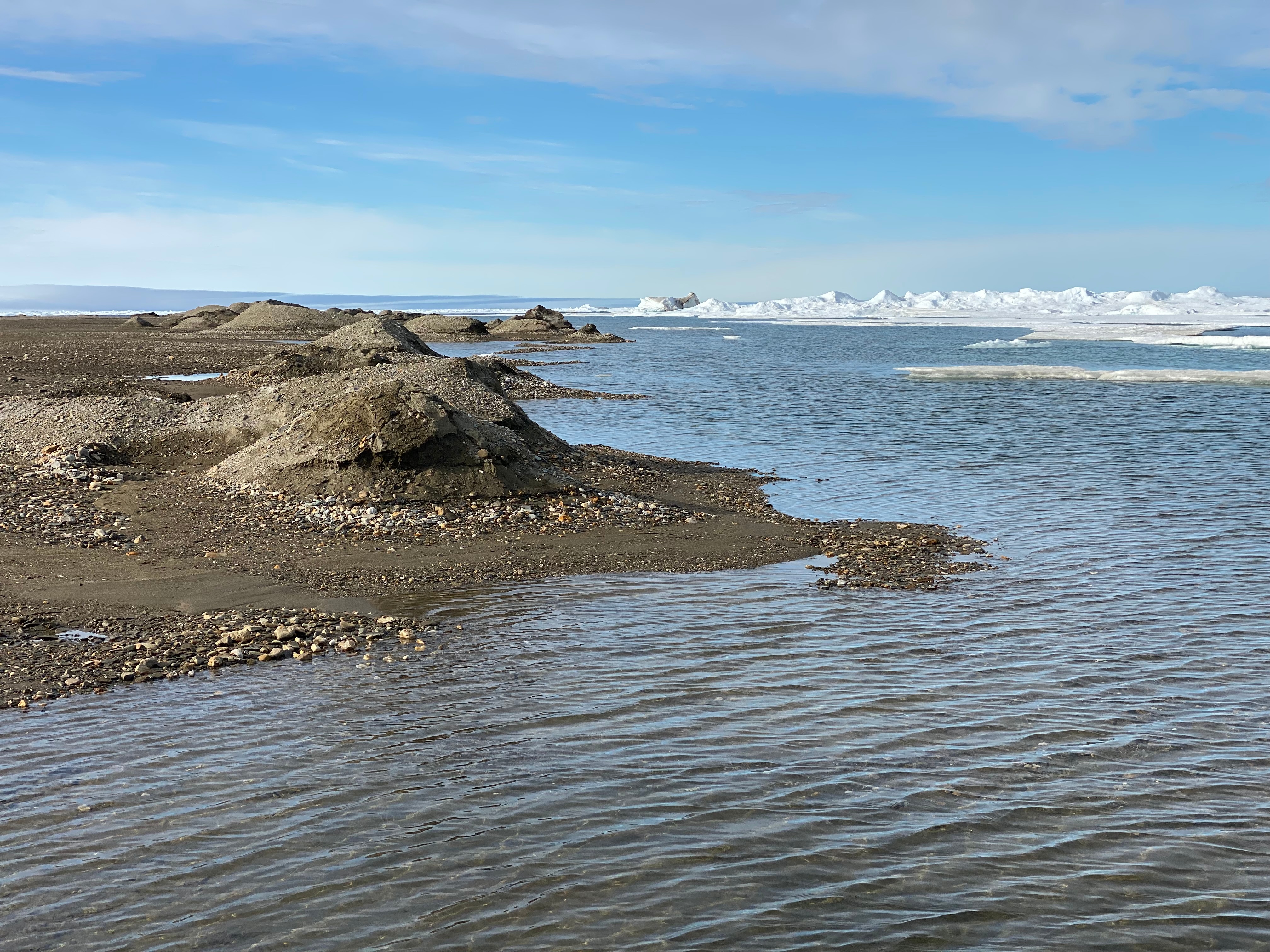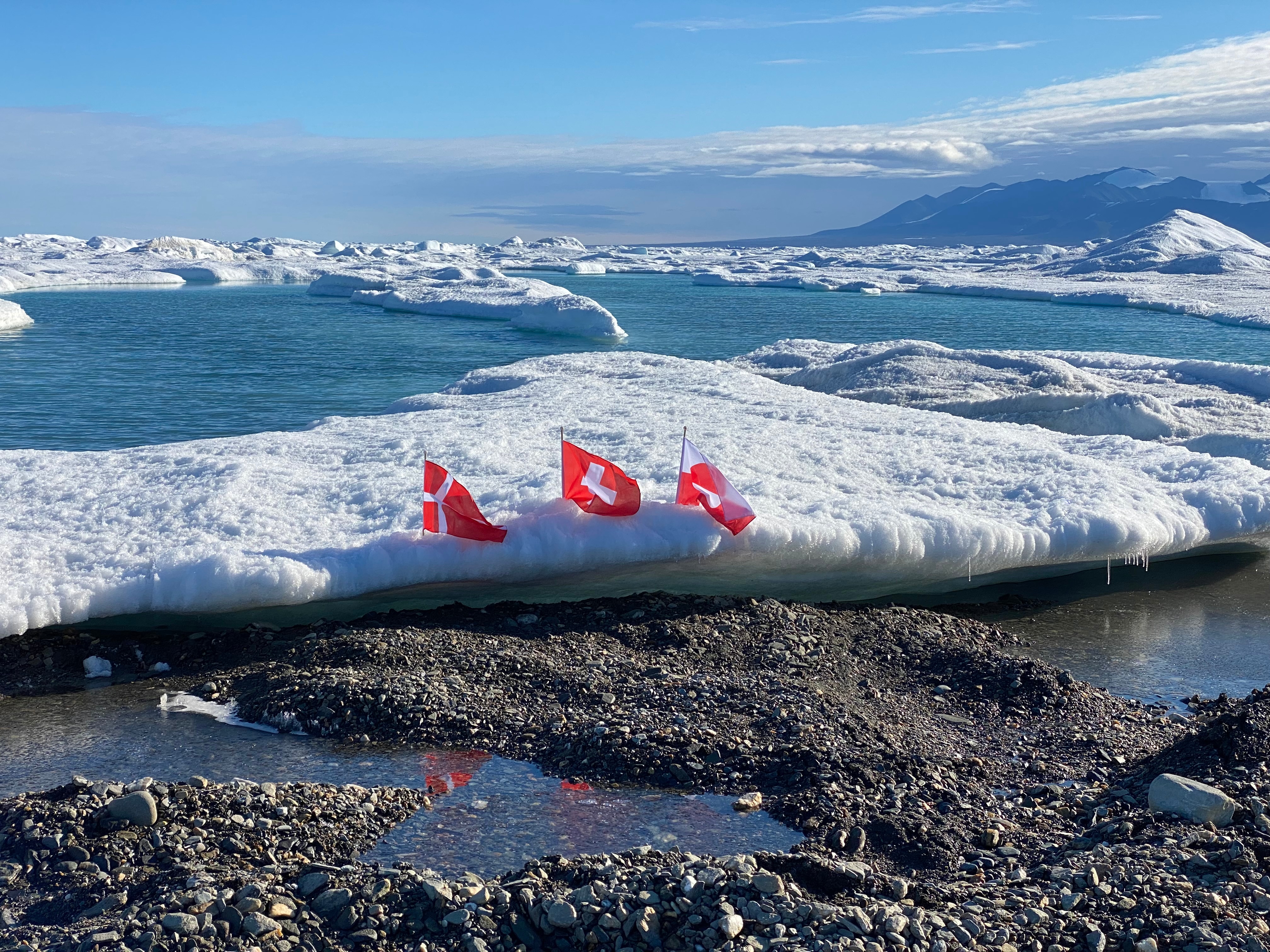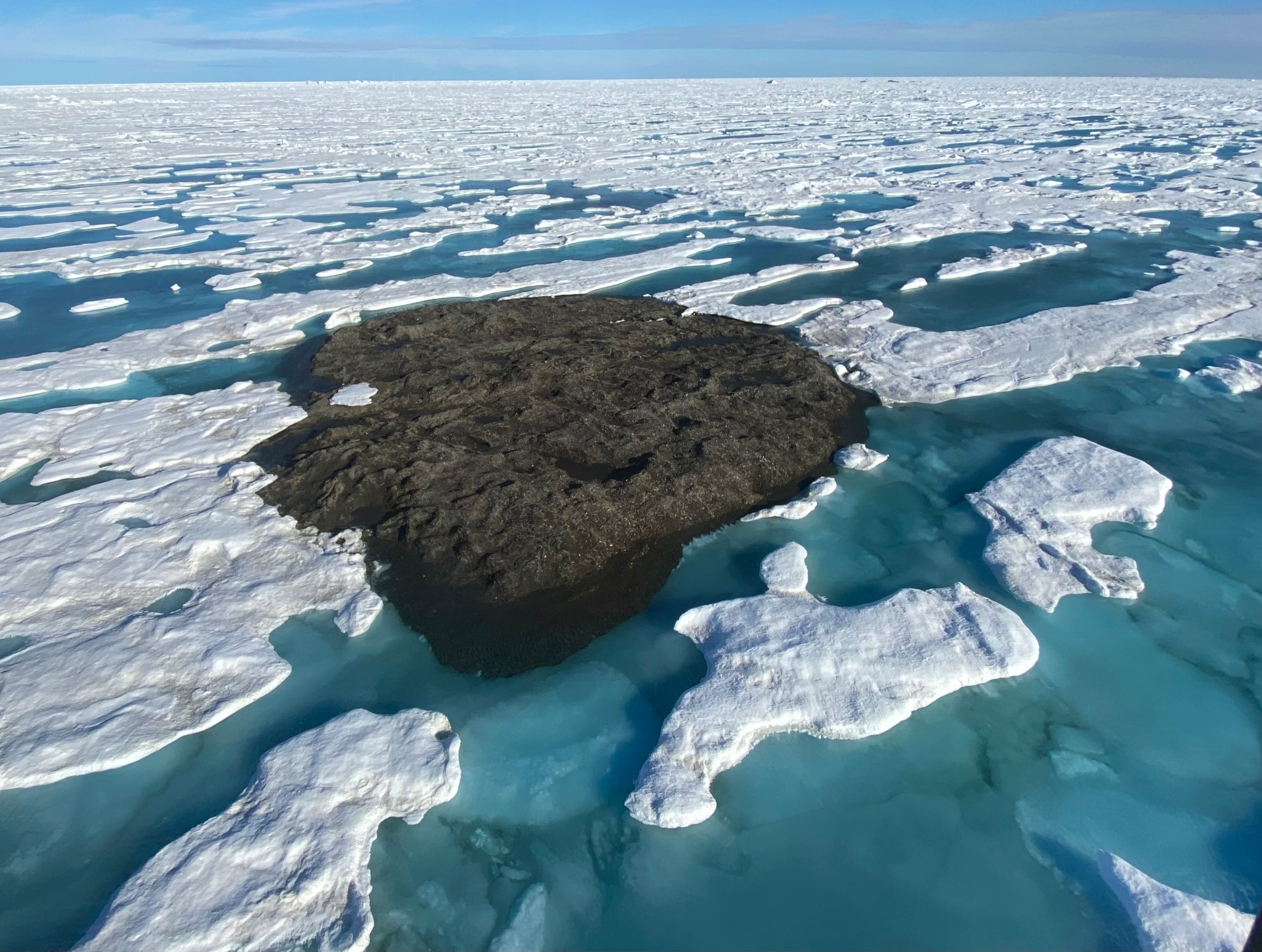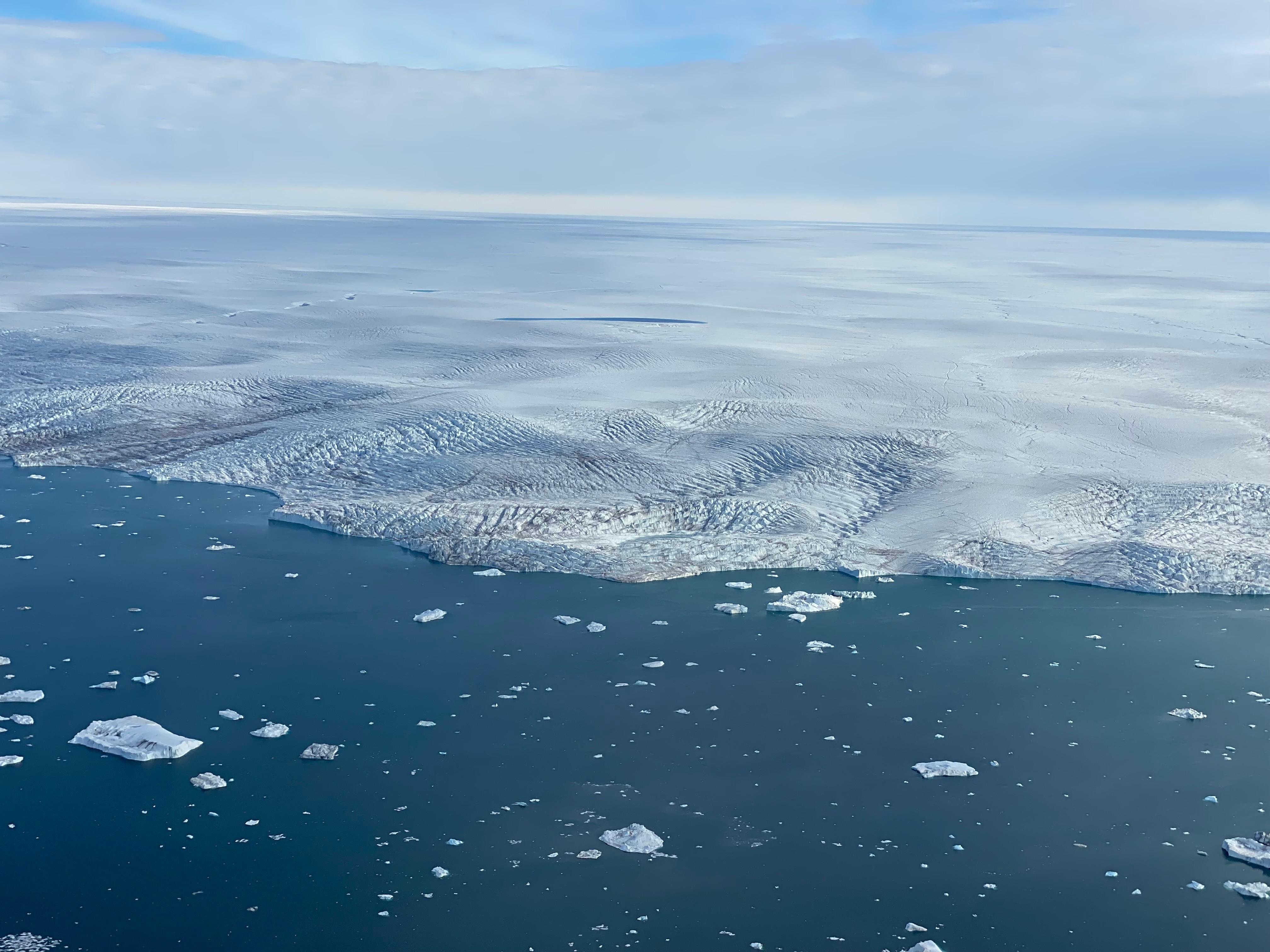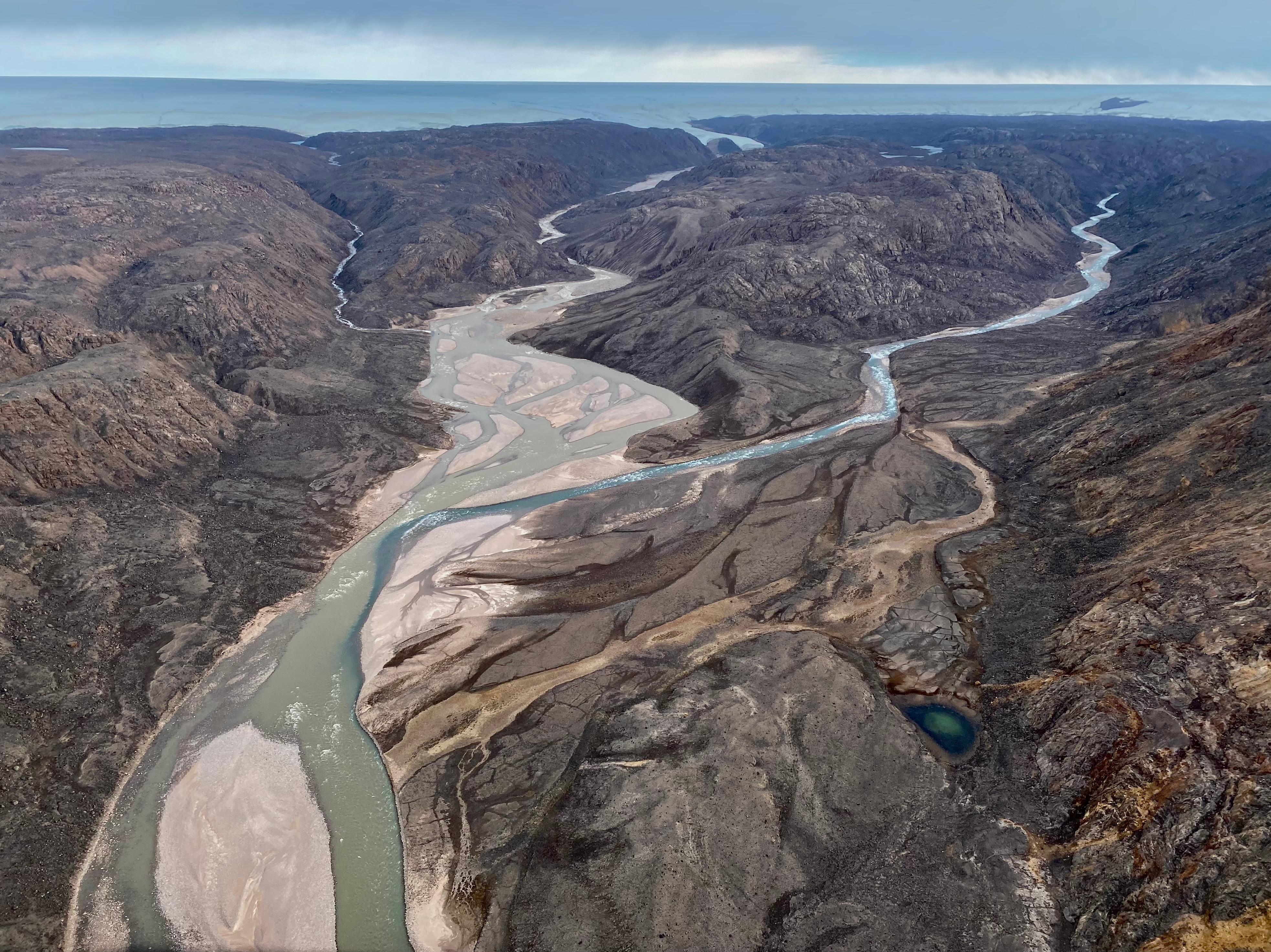Leister Expedition Go North 2022 in North Greenland
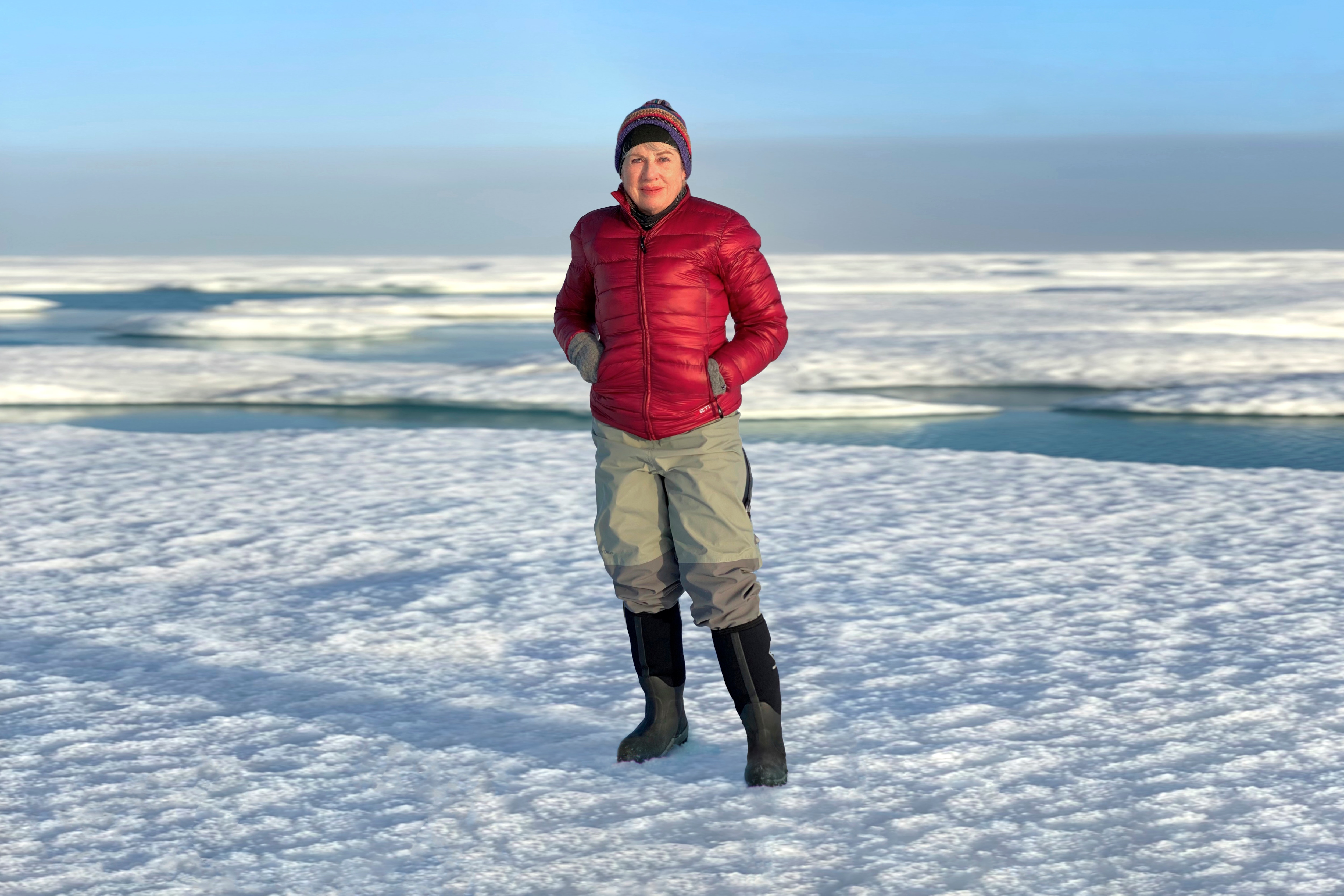
In July 2021, researchers from Denmark and Switzerland discovered what was thought to be the world's northernmost island during the Leister Around North Greenland expedition. During the subsequent Leister expedition Go North in August 2022, another team of researchers discovered that the island is a stranded iceberg.

Christiane Leister in July 2021 on the newly discovered northernmost island “Qeqertaq Avannarleq”. In the foreground a large boulder under which an aluminum box containing the expedition data was deposited. Christiane Leister found this aluminum box again in August 2022 and moved it under a newly erected cairn.

The picture shows René Forsberg, Martin Nissen (Danish Agency for Data Supply and Efficiency), and Henrik Lassen (logistics manager of the expedition) drilling the ice. René Forsberg measures the sea depth with an echo sounder and Martin Nissen the thickness of the fast ice with a probe.
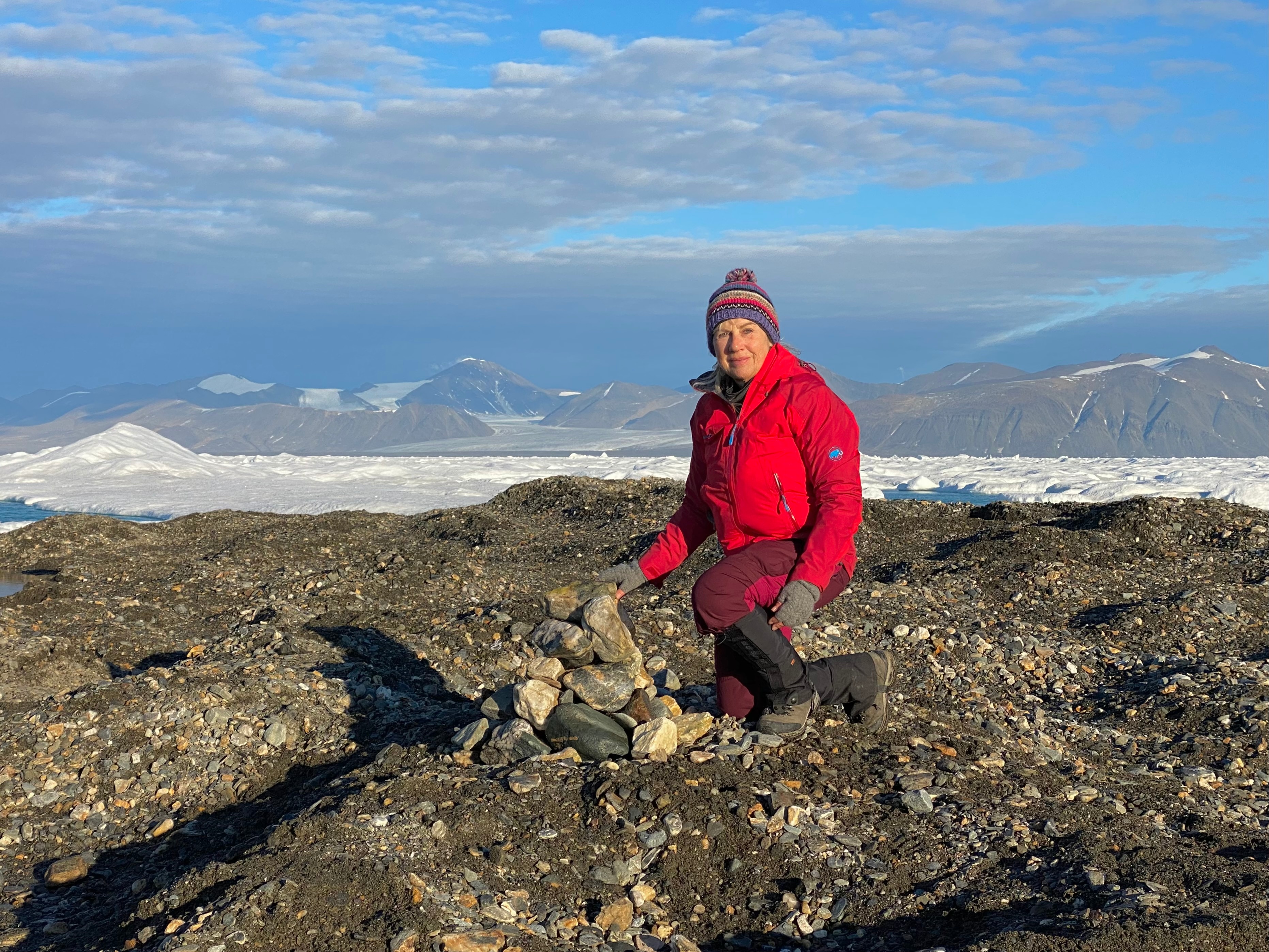
Christiane Leister on the island, newly discovered in August 2022. In the foreground is a cairn, under which is an aluminum box with the expedition data. In the background the fast ice and the North Greenlandic coast with mountains and glaciers.

Christiane Leister with the scientists Prof. Anders Primé (University of Copenhagen), Dr. Tobias Schneider (Columbia Climate School New York) and Dr. Denis Schlatter (Swiss geologist) on the island discovered in 2021, which they christened “Qeqertaq Avannarleq”. In the foreground you see a geomark and two aluminum boxes with the expedition date 2021 and 2022, which were subsequently deposited under a newly erected cairn.
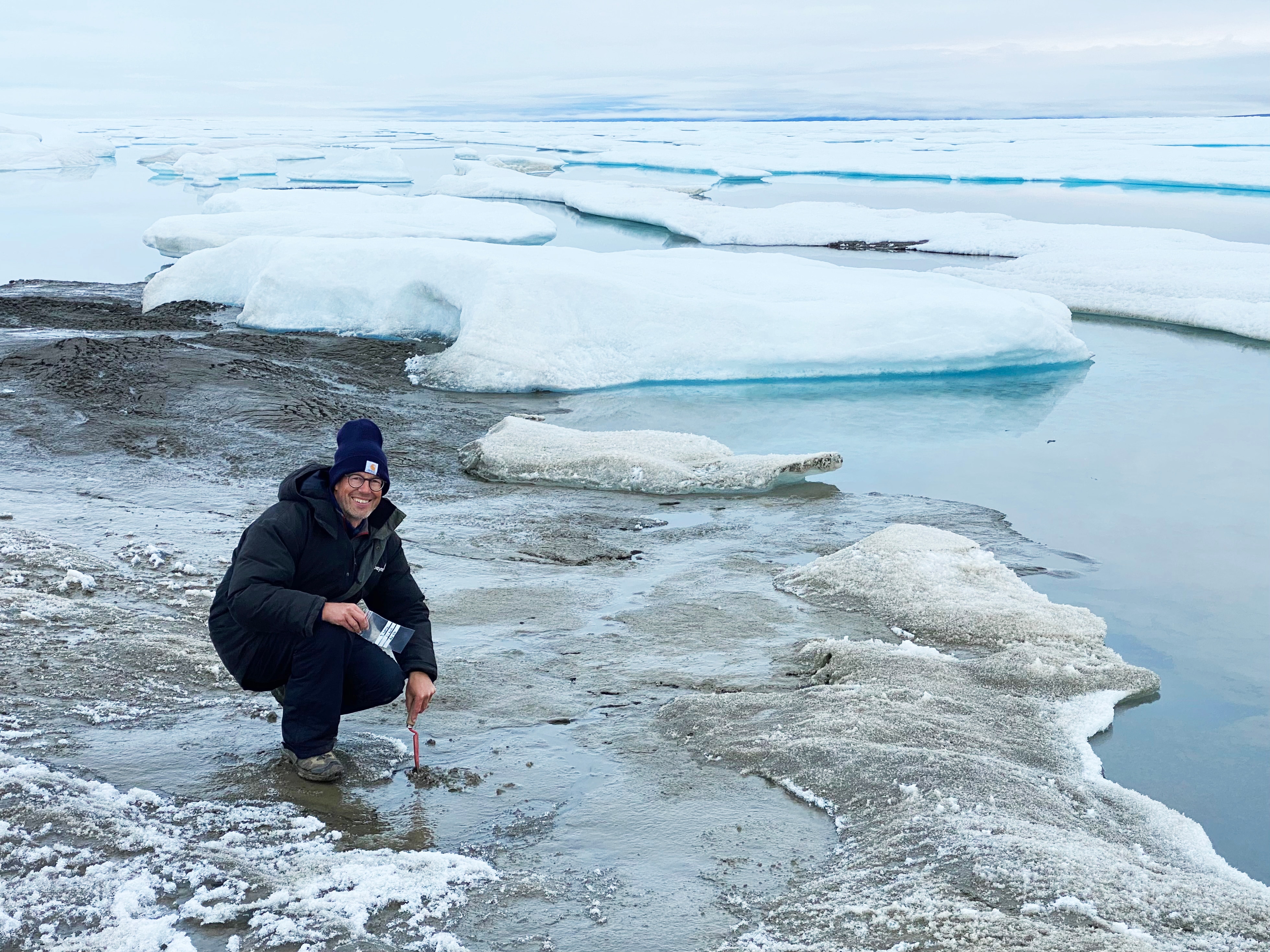
Aders Primé while taking various soil samples to determine bacteria on “Leister Island 2021”. The prepared samples will later be examined in the laboratory for origin and properties.
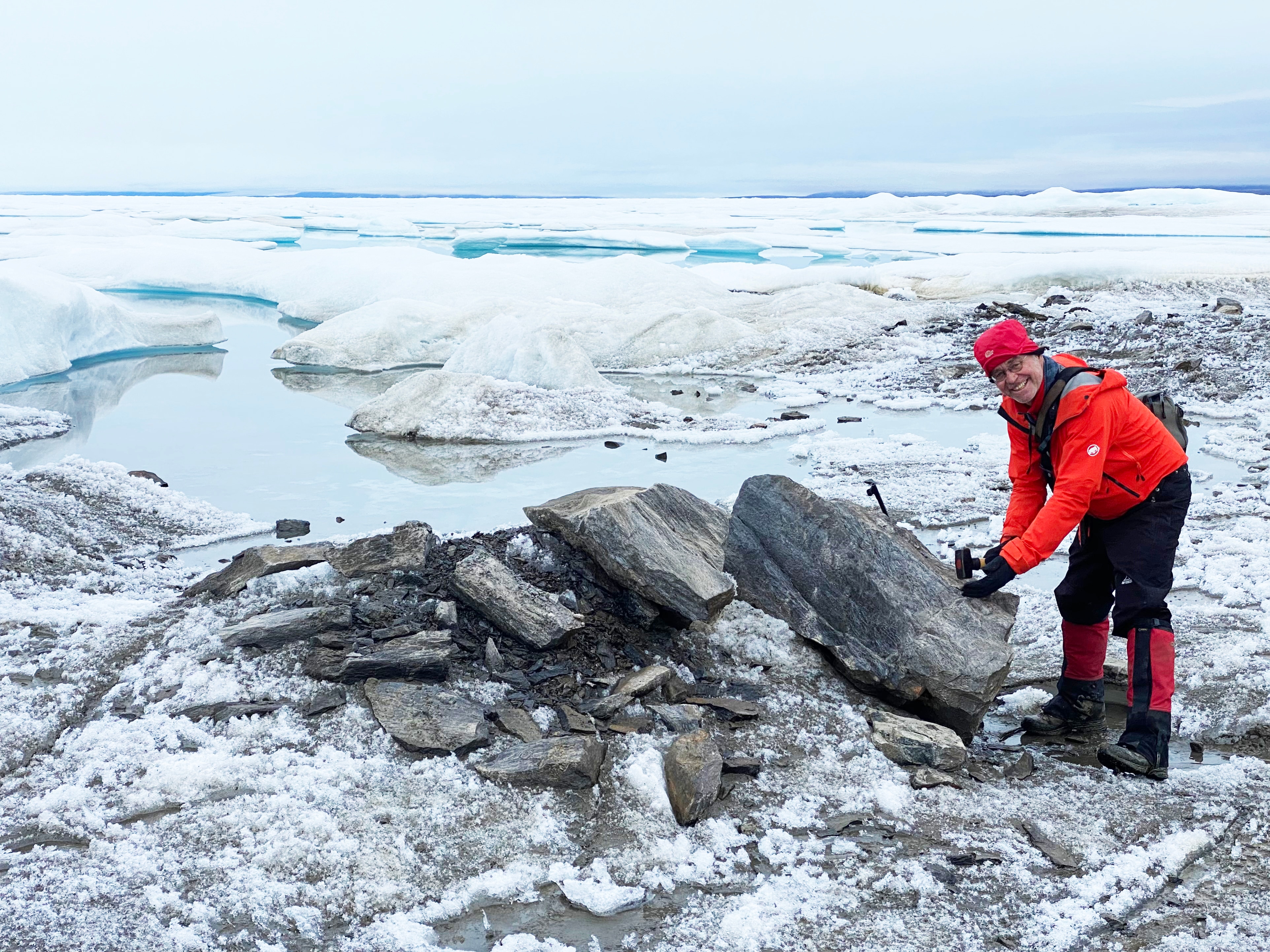
Denis Schlatter is pleased to see large boulders on the “Leister Island 2021”, enough material for samples for subsequent geological examination in the laboratory of the University of Karlsruhe.

Christiane Leister and Tobias Schneider on the newly discovered “Leister Island 2022” taking water samples for isotope analysis.

Upon arrival at Cape Morris Jesup, a lot of work awaited the expedition members to set up the base camp.

Christiane Leister's waypoints during the expedition in North Greenland. The flags in the Arctic Ocean mark helicopter landings on fast ice, on the two “Leister Islands” and Kaffeklubben.

In the picture you can see the glacier “Sermeq Konrad Steffen” named after Konrad Steffen. The photo was taken by Christiane Leister from a helicopter on August 13, 2022, the last day of the Leister Expedition Go North 2022.

The photo shows Konrad Steffen with Christiane Leister in front of the Swiss Camp. The photo was taken on May 8, 2018, when Christiane Leister visited the research station with her expedition team.

The Snow Hare still wears its white winter coat and travels on the dark scree without camouflage. For better camouflage, its white fur turns gray-brown in summer.

In the photo you can see an Arctic Pearl Butterfly. This is the most common in Greenland, along with four other butterfly species. It strongly resembles the Polar Pearl-bordered Butterfly, which is native only to High Arctic North and Northeast Greenland.




